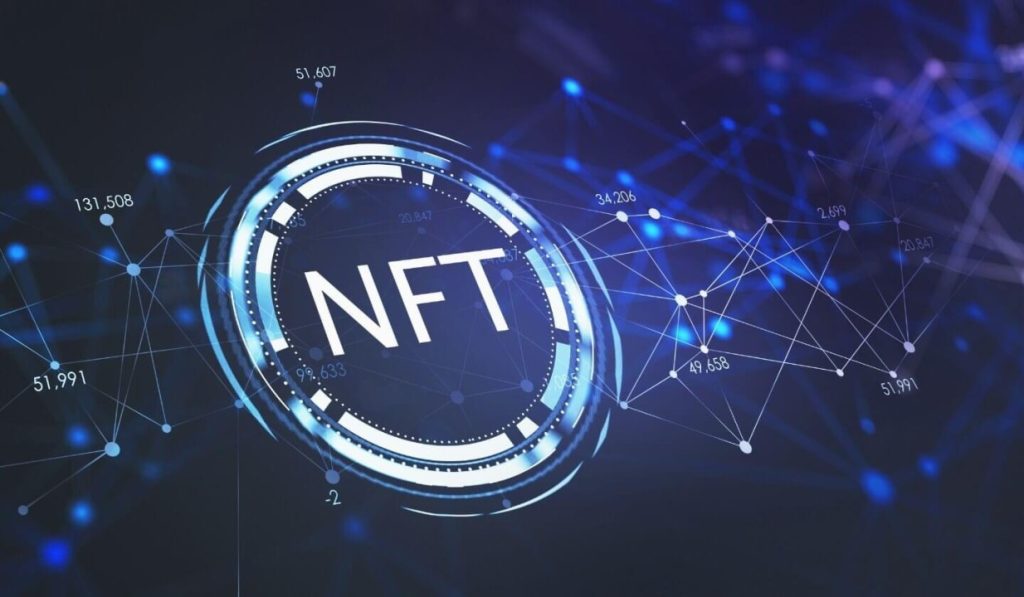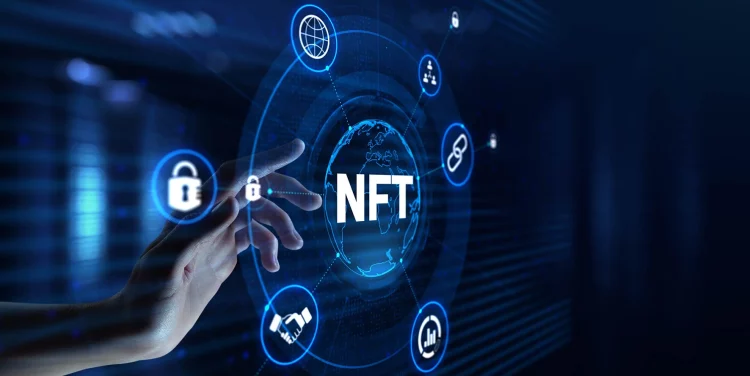Introduction
The rise of Non-Fungible Tokens (NFTs) has revolutionized multiple industries, creating a profound shift in the way we perceive ownership, digital assets, and intellectual property. What began as a niche trend in the world of digital art has quickly evolved into a multi-billion dollar industry that spans diverse sectors such as gaming, virtual real estate, music, sports, and even traditional finance. As we witness this rapid expansion, it’s evident that NFTs are not just reshaping industries—they are catalyzing global transformations.
In this article, we will explore the profound impact NFTs are having across various industries, the technological advancements that have made them possible, the challenges and opportunities they present, and the role they will continue to play in the digital economy of the future.
What Are NFTs?
At its core, an NFT is a type of digital asset that represents ownership or proof of authenticity of a unique item or piece of content stored on the blockchain. Unlike cryptocurrencies such as Bitcoin or Ethereum, NFTs are not interchangeable. Each token is unique and cannot be replaced with another. This distinct feature is what makes them “non-fungible”—a concept that is fundamental to the NFT ecosystem.
NFTs are primarily used to represent items such as artwork, music, videos, virtual goods in gaming, and more. What distinguishes NFTs from traditional assets is their ability to digitally assert the scarcity and ownership of a specific item in a decentralized manner.
NFTs and the Art World: A Paradigm Shift
One of the first sectors to embrace NFTs was the art world. Artists, collectors, and galleries have flocked to NFTs as a means of transforming digital art into unique, sellable assets. NFTs have democratized the art market, allowing creators to mint their art, sell it directly to consumers, and receive royalties on secondary sales.
Revolutionizing Art Ownership and Accessibility
NFTs have fundamentally altered the way we think about art ownership. In the traditional art market, ownership is limited by physical location and access. Collectors and investors often need to be physically present or work through intermediaries such as auction houses to acquire art. NFTs, however, enable anyone with internet access to own and trade unique digital art pieces from anywhere in the world.
Furthermore, NFTs create a transparent and immutable record of ownership. Blockchain technology ensures that each NFT’s provenance is publicly verifiable, which is crucial in establishing the authenticity of digital art. For artists, this means the ability to maintain ownership rights even after the initial sale and earn royalties whenever the art is resold in the future. This provides creators with a sustainable, ongoing source of income.
Impact on Art Valuation
The value of art has long been determined by traditional metrics such as fame, historical significance, or rarity. With NFTs, the value can be influenced by factors like the rarity of the token, its creator’s reputation, and the perceived importance of the work within the digital ecosystem. In some cases, NFTs have even outpaced physical art in terms of value—some digital pieces have sold for millions of dollars.
NFTs in the Gaming Industry: Revolutionizing Virtual Economies
The gaming industry is another sector profoundly impacted by NFTs. In the past, in-game items such as skins, weapons, and characters were owned by the game developer, and players could only use them within the confines of the game. However, NFTs have flipped this model on its head, allowing players to truly own their virtual goods.
Play-to-Earn Models
NFTs enable the development of play-to-earn (P2E) games, where players can earn tokens by participating in the game and then trade, sell, or use these tokens in other games or platforms. These games can create vast, interconnected economies within virtual worlds. This can lead to the creation of new business models for developers and players alike. Instead of merely spending money to acquire in-game items, players can now earn NFTs that hold intrinsic value outside the game’s ecosystem.
For instance, players in games like Axie Infinity can earn and trade NFTs representing creatures that can be used in battles. These NFTs have actual monetary value, and some players have even turned gaming into a full-time job.
Ownership and Interoperability
Another key benefit of NFTs in gaming is that they enable players to maintain true ownership of their virtual assets. Unlike in traditional games, where items disappear if the player leaves the game, NFTs allow players to retain their items even if they switch games or platforms. This also opens the door to cross-platform and cross-game interoperability, where items and characters could be used across different digital ecosystems.
NFTs in Virtual Real Estate: Digital Land Ownership
Virtual real estate is rapidly gaining traction as a speculative asset class. Platforms such as Decentraland, The Sandbox, and Cryptovoxels allow users to buy, sell, and develop virtual properties as NFTs. In these platforms, individuals can purchase parcels of virtual land and build whatever they wish—be it virtual shops, art galleries, or entire cities.
Scarcity and Value of Virtual Land
Just like physical land, virtual land in these platforms is scarce, and its value increases as demand grows. The fact that ownership is verified on the blockchain ensures that the land is authentic and traceable. As these virtual worlds expand, they may become critical hubs for social interaction, entertainment, commerce, and more, much like physical cities in the real world.
Impact on Real-World Industries
The growing popularity of virtual real estate raises questions about the future of physical real estate. Will virtual spaces eventually become as important—or even more important—than physical ones for business and leisure? Companies such as Nike, Atari, and Samsung have already established a presence in virtual worlds, creating storefronts or advertising within these digital ecosystems. The real estate dynamics in the virtual space could mirror those of the physical world in terms of scarcity, value, and desirability.

NFTs and Intellectual Property: Navigating Legal Challenges
One of the significant challenges for the NFT ecosystem is intellectual property (IP) law. Ownership of an NFT does not automatically confer the right to the underlying intellectual property of the asset it represents. This distinction between NFT ownership and copyright ownership is crucial, as many NFT creators may sell their works without transferring the rights to the underlying content.
Copyright Issues
For example, when an artist creates an NFT of a digital artwork, the buyer may own the NFT but not the copyright to the image itself. This means that the buyer may not have the right to reproduce or commercialize the image. Understanding and defining these rights is a challenge that legal experts and the blockchain community are working to address.
Legal Framework for NFTs
As the NFT market grows, legal frameworks are being developed to establish clearer guidelines regarding ownership, copyright, and the transfer of intellectual property. Various governments are taking steps to address the regulatory environment surrounding NFTs, with particular focus on taxes, anti-money laundering (AML), and consumer protection.
Environmental Impact: NFTs and Energy Consumption
A growing concern surrounding NFTs is their environmental impact. The energy-intensive nature of proof-of-work (PoW) blockchains, such as Ethereum, has raised concerns about the carbon footprint of NFT transactions. Some NFTs—particularly those minted and traded on Ethereum—consume significant amounts of energy, leading to criticism from environmentalists.
Transition to More Sustainable Blockchains
Fortunately, the industry is taking steps to mitigate these concerns. Ethereum’s planned transition to proof-of-stake (PoS) through its Ethereum 2.0 upgrade is one such solution. PoS is expected to reduce the network’s energy consumption by up to 99%, making NFT transactions far more environmentally friendly.
Additionally, other blockchain platforms with lower environmental footprints, such as Tezos, Flow, and Polygon, are emerging as viable alternatives for minting and trading NFTs.
Challenges and Opportunities Ahead
While NFTs have gained massive popularity, they still face several challenges that could impact their growth trajectory. Key issues include:
- Scalability: As the NFT market grows, scalability of the underlying blockchain platforms will be crucial. Platforms must be able to handle millions of transactions while maintaining decentralization and security.
- Regulation: Governments and regulatory bodies are still grappling with how to classify and regulate NFTs. Clear guidelines regarding intellectual property, taxes, and anti-money laundering are essential for the continued growth of the market.
- Market Volatility: The NFT market remains highly speculative, with prices often swinging dramatically. This volatility can deter long-term investors and raise concerns about the sustainability of the market.
- User Education: Many users are still unfamiliar with how NFTs work, how to safely trade them, and the risks involved. Education and better user interfaces will be essential for onboarding more people into the NFT ecosystem.
Conclusion: The Future of NFTs
NFTs have undoubtedly sparked profound transformations across multiple industries, from art and gaming to real estate and beyond. As they evolve, NFTs will continue to break new ground in the realms of ownership, digital rights, and virtual economies. The technological, legal, and environmental challenges they face will require collaboration and innovation from both the blockchain community and the broader society.
As NFTs push the boundaries of what is possible in the digital world, they will likely become a cornerstone of the next phase of the internet—one that is decentralized, inclusive, and profoundly interconnected. The future of NFTs is bright, but it will require continued efforts to address the challenges ahead while ensuring that the benefits they offer are accessible to all.

















































